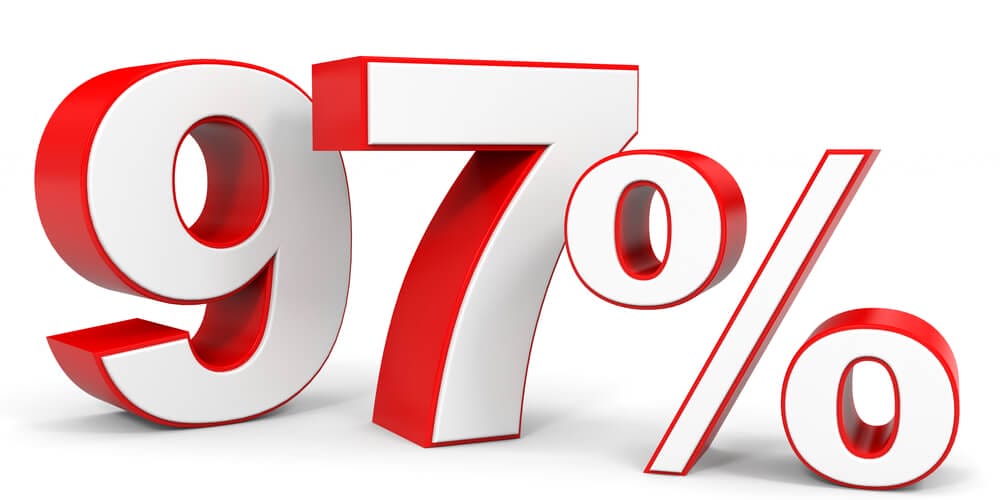Conventional Loans
Conventional loans, those that are underwritten primarily to guidelines set forth by Fannie Mae and Freddie Mac have been around in some fashion since 1967, when Fannie Mae became its own government-sponsored corporate entity followed by Freddie Mac in 1970. Historically, conventional loans required a down payment of at least 20%, which sent many home buyers to seek out an FHA, USDA or a VA loan.
USDA and VA loans don’t require a down payment at all. However, USDA loans have requirements that limit the amount of income a household can have as well as identifying where a prospective property could be financed. That means both a geographic and an income limitation. VA loans don’t have any such requirements but do require the borrowers be a veteran, certain active duty personnel and members of the National Guard or Armed Forces Reserves with at least six years of service. The FHA program does require a down payment but it is only 3.5%, not 20%. The bulk of FHA loans issued are taken out by first time buyers due to the low down payment requirement. It’s simply easier to save up the necessary funds to buy a home using the FHA program.
With conventional loans, the 20% down payment kept many potential home buyers at bay. That is until the advent or mortgage insurance. In the late 1950s, a new type of insurance company came to market. This insurance policy was designed to address the 20% down payment requirement that Fannie and Freddie needed. With mortgage insurance, the policy would cover the difference between the buyer’s down payment and the 20% threshold. For example, if the buyers had a 5.0% down payment, the policy would cover the remaining 15%. Should the loan ever go into default, the lenders would be compensated for the lost 15% but still be on the hook for the outstanding mortgage balance.

For years, the minimum down payment either Fannie or Freddie would accept is 5.0%. That is until 2014. Fannie Mae’s Conventional 97 program asked for just 3.0% down and after a few fits and starts, the loan program was revamped and reintroduced in 2014 to more accommodate buyer preference. In addition, the loan program had too many restrictions the program was rarely utilized.
The Conventional 97 Program Basics
Just to note, this isn’t the only 3.0% down conventional loan from Fannie Mae. There is another program called HomeReady that also asks for just 3.0% down but the HomeReady program was designed to be used in specific lower income areas as well as to lower income borrowers. The Conventional 97 has no such limitations and can be used by anyone.
The down payment can come from the buyer’s own funds but it can also be in the form of a gift from a family member or qualified non-profit. Buyers may also apply for government grants where available. There is no restriction to first time home buyers, either and can be used by those buying there second or even third home as long as one of the buyers can be considered a first time home buyer. A first time home buyer is technically defined as someone that has not owned a home within the previous three years. If someone meets that requirement, guidelines allow for first time home buyer status.
The loan choices are fewer compared to other mortgage programs with the 30 year fixed rate loan being the only other option. There is no 15 or 20 year fixed rate available, for instance. The Conventional 97 can only be used to finance a primary residence, no second, vacation or rental properties allowed. The maximum loan amount for this program is the same as the conforming loan limit for most areas at $417,000. And, as with other conventional loans with less than 20% down, there will be a mortgage insurance policy.
However, unlike the government-backed trio of VA, USDA and FHA, there is no upfront mortgage insurance premium, only an annual premium that is paid monthly. Buyers can use the Conventional 97 mortgage to finance a single family residence only including condominiums, town homes, 2, 3 and 4 unit homes as long as the buyers occupy one of the units. The minimum credit score for this program is 620.
While the Conventional 97 program isn’t a zero down mortgage, it’s really very close. And don’t forget the down payment can come from other qualified sources that can help not only with the down payment but also associated closing costs as well. Even the FHA loan with 3.5% down doesn’t compete very well with the Conventional 97 loan. Besides the additional down payment, FHA borrowers are required to purchase an upfront mortgage insurance premium which is added to the loan amount.
Further, there are maximum FHA loan limits that restrict the amount borrowed based upon the location of the property being considered.

With interest rates the way they are today, it might be a good move to not wait until you can put down 10 or even 5.0%. No one knows where interest rates will be over the next several months but we do know where they are today. With the Conventional 97 loan, buyers have competitive options for those wanting or needing a low down payment loan without having to concede to a government program that restricts who is qualified, where the property may be located or limits on household income.
The Conventional 97 program is not as popular perhaps as it should be as many lenders simply revert to an FHA loan when a low down payment option is required. If you’re in the process of buying a home or simply thinking about it and want a low cost loan, talk to your loan officer about the Conventional 97 program.


